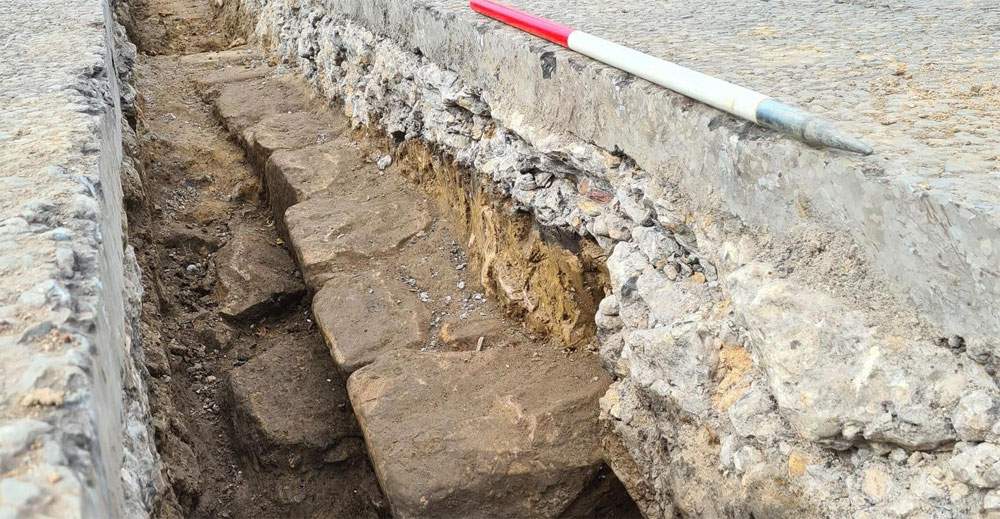England, a section of Hadrian's Wall discovered in Newcastle
In England, on the outskirts of Newcastle, in the north of the country, further remains of Hadrian’s Wall, the great fortification, a Unesco World Heritage Site, built in the first century A.D., that marked the boundary between the Roman province of Britain and Caledonia, i.e., the territory, corresponding largely to present-day Scotland, inhabited by the Caledonians, have been discovered. The discovery was announced by the Northumbrian Water company, which manages Newcastle’s water supply network: in fact, the discovery was made in a busy and busy area of the city during some maintenance work.
The section of Hadrian’s Wall that has just been found is about three meters long and lies underground: the archaeologists who analyzed the remains of the structure believe that it is a portion of the wall dating back to the earliest stages of its construction, since what has resurfaced is made up of large stone blocks (smaller stones were used instead in the more advanced stages of construction).
Giving some insight into the significance of the discovery is archaeologist Philippa Hunter of Archaeological Research Services, who was called in by Northumbrian Water to analyze the findings: “Although it is well documented that the route of Hadrian’s Wall passed through this area of the city, it is really exciting to have found the remains of the Wall and thus to have the opportunity to learn more about this internationally significant site. And this is especially true because of the fact that we believe we have discovered a part dating back to the earliest construction phase of the Wall. It is always a pleasure to work together with Northumbrian Water, which takes the protection of archaeological remains such as these very seriously.”
“It’s incredible to have made this outstanding discovery, and we’re delighted to be working with Archaeological Research Services to ensure that the structure is properly protected,” says Graeme Ridley of Northumbrian Water, on the other hand. “This is an incredibly special testament to the heritage of the Northeast, and we are honored to be a part of it. We have completed work in this area-this was an important operation to ensure that our customers continue to receive excellent, high-quality water.”
Hadrian’s Wall started right at present-day Newcastle upon Tyne (the ancient Pons Aelius of the Romans) and ended at Carlisle (Luguvalium for the Romans). The portion discovered at Newcastle is not the only one remaining: in the countryside between the two cities there are still several sections of the Wall still standing. Because of its historical importance, the Wall was declared a UNESCO World Heritage Site in 2005.
 |
| England, a section of Hadrian's Wall discovered in Newcastle |
Warning: the translation into English of the original Italian article was created using automatic tools. We undertake to review all articles, but we do not guarantee the total absence of inaccuracies in the translation due to the program. You can find the original by clicking on the ITA button. If you find any mistake,please contact us.




























